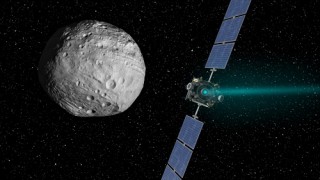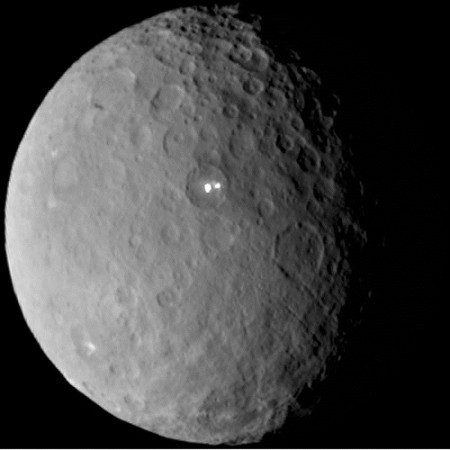
NASA’s Dawn spacecraft has recently become the very first probe to orbit the dwarf planet Ceres. The momentous occasion occurred on March 6, following Dawn’s seven-plus years of flight, with the mission expected to last a total of nine years.
According to the probe’s overseers, Dawn was approximately 38,000 miles from Ceres before the dwarf planet’s gravity captured it. Over the ensuing weeks, the orbit of the solar-powered spacecraft will be modified to ensure it is positioned to within 8,400 miles of the mini-planet.
Ceres represents the largest, unexplored object within our inner solar system between Mars and Jupiter. After its 3.1 billion-mile trek, Dawn looks set to explore the makeup and terrain of the 600-mile diameter dwarf planet, and may even provide clues as to the solar system’s origins.
According to Marc Rayman, the chief engineer for the mission, Dawn is using a piece of sophisticated technology that he first heard of in an episode of the TV sci-fi series Star Trek. “It’s using its advanced ion propulsion system, which I actually first heard of in a Star Trek episode from the logical Mr. Spock,” stated Rayman. “And using (ion engines), it’s flying a complex and elegant course into orbit that I think would be the envy of any crackerjack spaceship pilot.”
Making up around a third of the asteroid belt’s mass, Ceres is believed to possess a rocky core and an ice-covered mantle. Astronomers have suggested that the spherical minor-planet boasts an underground ocean of liquid water, with its surface comprising of various hydrated minerals and water ice. Ceres is an ancient remnant of the solar system’s volatile beginnings, during a time when planetary accretion was taking place.
Dawn has already taken observations of an entirely different proto-planet, Vesta, which is also situated in the asteroid belt. After spending a year studying the 525-kilometer-wide asteroid, Dawn snapped a number of images of Vesta’s surface. The mission team sighted gullies along the proto-planet’s surface, and confirmed that a series of asteroid collisions were probably responsible for streaks and spots of darkness, previously sighted along Vesta’s rocky terrain.

Once Dawn is just a few hundred kilometers away from Ceres’ surface, it will begin taking high-resolution images of the dwarf planet. According to Dr. Carol Raymond, the Dawn mission’s deputy principal investigator, both Ceres and Vesta were, initially, in the process of becoming much bigger “planetary embryos.” Speaking to BBC News, Raymond went on to add, “But these two stopped before they reached that evolutionary stage, and so they are essentially these intact ‘time capsules’ from the very beginning of our Solar System; and that’s really the motivation for why Dawn is going there to explore them in detail.”
Scientists are currently puzzled by two very luminous spots, located inside a large crater in Ceres’ Northern Hemisphere. While there remains much mystery surrounding these white spots, astronomers have speculated them to be sizable outcrops of reflective materials, such as ice or salts, likely revealed in the aftermath of a high-impact collision. Alternatively, it’s possible they could be ice volcanoes.
Dawn will continue to orbit Ceres for many years to come, even after it stops transmitting information back to NASA. Eventually, the craft will run out of hydrazine fuel and will no longer be able to maintain its altitude, thereby losing its ability to position its solar panels and antenna to the Sun and Earth, respectively.
